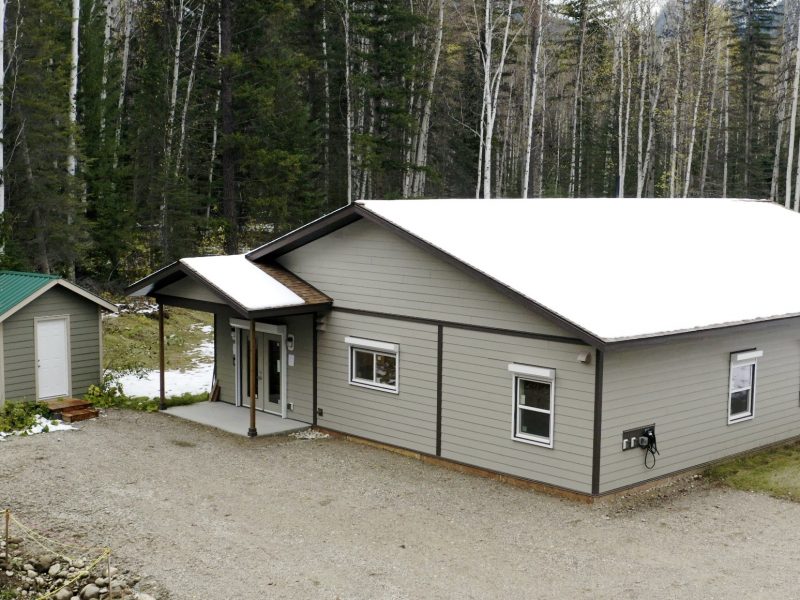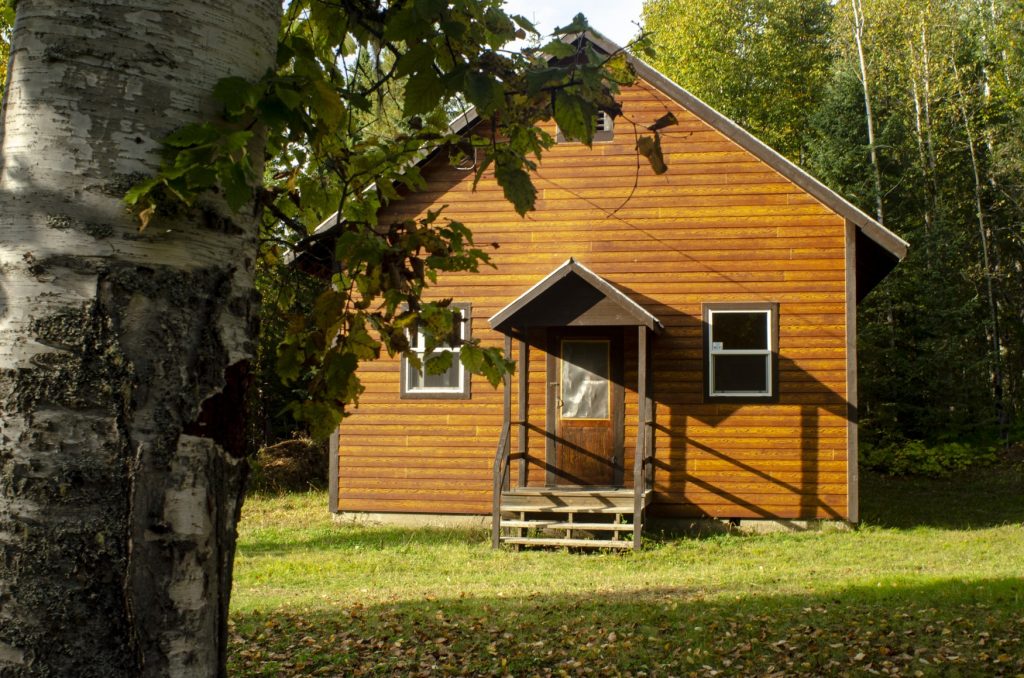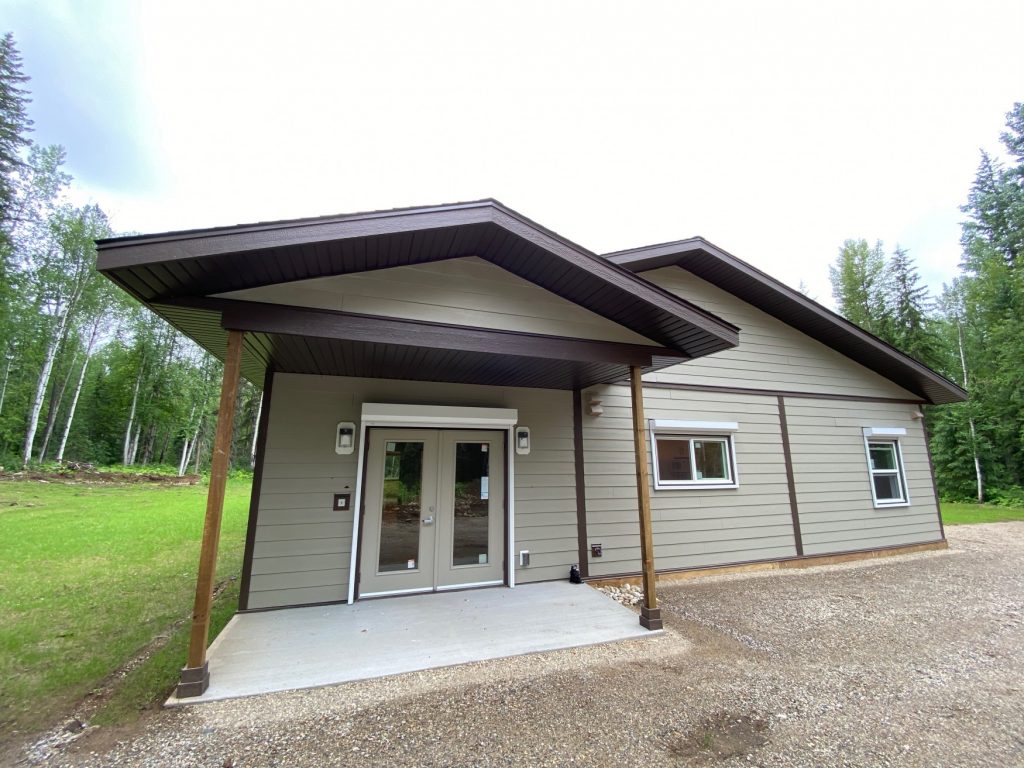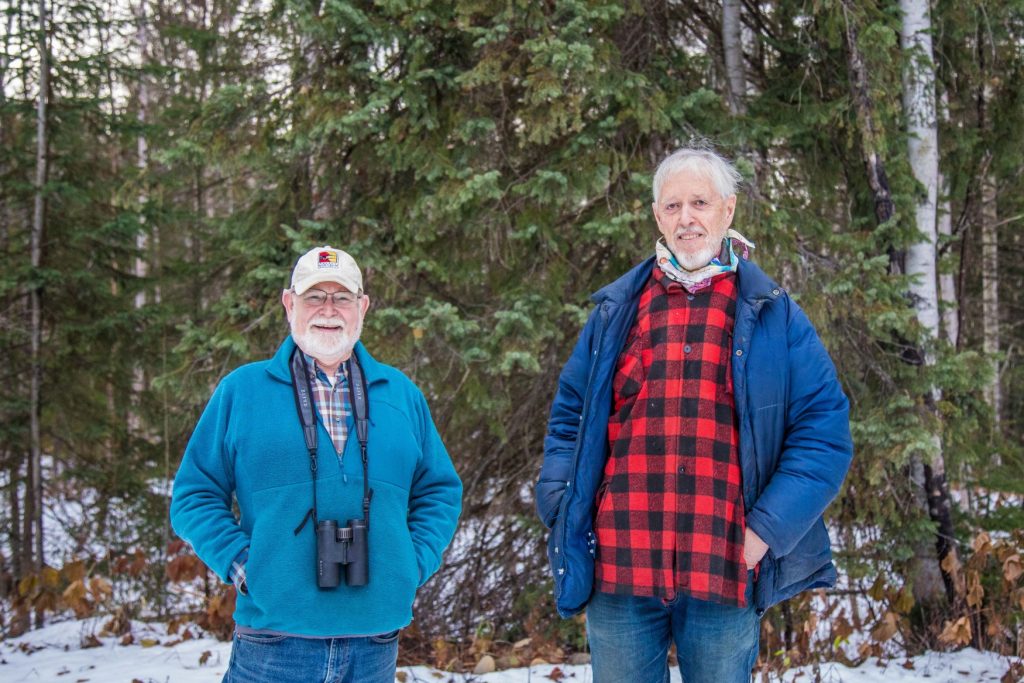
A new educational facility near Wells Gray Provincial Park is nearly three decades in the making. Thompson Rivers University is pleased to expand the Wells Gray Education and Research Centre with a new four-season facility to accommodate year-round visits to the area, known for its globally unique biodiversity. Old growth forests, wildlife habitats, diverse ecological communities and networks of survey trails are within minutes of the centre’s doorstep.
TRU is marking the opening with a virtual event on Tuesday, Nov. 24, at 1 p.m., featuring a panel discussion on the importance of this place from the perspectives of students, faculty and Indigenous peoples. The public is invited to join here. (The event will be hosted on Microsoft Teams Live).
WATCH: Education in Wells Gray
“TRU has deep appreciation for the significance of this land to the First Nations surrounding Wells Gray. Their ancestors have inhabited this area since time immemorial and as such, they have a special relationship with it. We are grateful that our students have the opportunity to access and learn from the rich ecological diversity in the area,” said TRU President and Vice-Chancellor Brett Fairbairn.
The new, wheelchair accessible centre is 2,345 square feet with meeting, classroom and dining spaces, a kitchen and sleeping quarters for 20. Its location has a great deal of teaching and research potential for students and faculty from a wide array of disciplines, as well as community use. Until this point, the centre consisted of an old one-room schoolhouse.
The Friends of Wells Gray Park have been instrumental over the years in the development of the site, in addition to donors such as Ken Lepin, Trevor Goward, Helen Knight, the Wells Gray Community Forest Corporation, Roland and Anne Neave and TRU’s Faculty of Science. Many other generous donations have also been received over the years from valued community partners.

A one-room schoolhouse donated by former SD56 has been used by TRU since the early 90s. 
The new centre accommodates year-round visits and longer stays in Wells Gray.
Wells Gray lies within the unceded Secwépemc lands of the Simpcwúl’ecw (Simpcw) and Tsq’escenemc (Canim Lake Band). The land surrounding Wells Gray represents a major habitat for mountain caribou and forms part of the migration route for grizzly bears in BC. There are an estimated 15,000 grizzly bears in the province, representing nearly one-quarter of North America’s grizzly bear population.
“The use, occupancy and land marks left by Secwépemc ancestors, lends to the uniqueness of this education centre,” said Simpcw Chief Shelly Loring. “Simpcw also recognizes the unique biodiversity surrounding the area of where the centre is located. Simpcw are proud that their territorial lands will be utilized to further enhance the knowledge and respect for our territories and culture.”
TRU’s history in Wells Gray

The Wells Gray Education and Research Centre has consisted of land and buildings associated with the former Upper Clearwater School operated by TRU since 1992. Adjacent lies five hectares of land donated to the university by lichenologist Trevor Goward and Helen Knight. Bordering the edge of the property lies 500 hectares of Crown land officially designated for educational and research purposes. Trails lead to the 550,000 hectares of Wells Gray Provincial Park.
“Over the past 25 years, TRU’s Education and Research Centre has provided hundreds of students with memorable, hands-on experiences with Wells Gray’s wildlife and all of the treasures that the park protects,” said Tom Dickinson, former Dean of Science and current faculty member in biological sciences. “These new facilities will allow even more future students to benefit from the unique learning opportunities that this place offers.”
- 1985:
- The Wells Gray’s Provincial Park Management Plan states: It will be the objective of BC Parks to encourage the pursuit of scholarly research regarding scientific fields pertinent to the resources of Wells Gray Park.
- 1990:
- A co-operative agreement is developed between the Friends of Wells Gray Park and the University College of the Cariboo (UCC).
- 1992
- The deed for the property containing the original one-room schoolhouse constructed in 1945 is transferred from School District 56 to UCC.
- Trevor Goward and Helen Knight donate a 10-acre lot to UCC to support any new facilities.
- 1994:
- Biology 409: Field Methods in Terrestrial Ecology is the first course entirely offered using the Wells Gray Education and Research Centre.
- 1995
- The first summer public education program is offered as collaboration between Friends of Wells Gray Park and TRU.
- 1996
- UBC is involved in the first cross-university usage of TRU’s facility for research into the role of natural disturbances in forest succession (Gary Bradfield and Andre Arsenault).
- 1997
- UCC School of Trades and Technology residential construction class builds cabins for teachers’ use.
- 2009
- TRU Faculty of Science assembles funds in contemplation of building new facilities. Total number of user days approaches 12,000.
- 2014:
- Longtime TRU donors Roland and Anne Neave donate 160 acres of land. The Neave Family Wetlands become part of TRU’s properties near Wells Gray.
- 2020:
- Modular components for a new facility are constructed by Horizon North with Stantec Project Management and modular buildings are transported to the site.
Over the years, numerous researchers from TRU and other universities in the western provinces have made use of the old facilities to study the diverse pristine habitats nearby. The Friends of Wells Gray Park have used it for their weekend natural history courses throughout the summer. To date, there have been around 24,000 user days logged at the site.
“As someone who worked in Wells Gray Provincial Park for 30 years, I have a deep love for this awe-inspiring place. Having TRU’s new Wells Gray Education and Research Centre up and running will do wonders to enhance understanding of the park, and will hopefully give TRU students a little piece of the wonder I experienced in my time in Wells Gray,” said Clearwater District Mayor Merlin Blackwell.
The new centre cost an estimated $861,000 that was made possible through major gifts, grants and contributions. Project contractors included Dexterra Group (formerly Horizon North Logistics), Stantec Engineering and Surveying Services, and On Call Service Centre.

 Woman jailed for sex assault
Woman jailed for sex assault Rescued after fall into river
Rescued after fall into river Killer not happy with show
Killer not happy with show Facial recognition at border?
Facial recognition at border? PM ups attacks on Poilievre
PM ups attacks on Poilievre CRA will get the money: PM
CRA will get the money: PM Instagram fraudster jailed
Instagram fraudster jailed 11 Trump allies indicted
11 Trump allies indicted Ukraine uses new missiles
Ukraine uses new missiles BoC officials split on rate cut
BoC officials split on rate cut Big loss for Boeing
Big loss for Boeing  Metro sales edged higher
Metro sales edged higher Warriors put to the brink
Warriors put to the brink Vees dominating Vipers
Vees dominating Vipers Warriors snakebitten in loss
Warriors snakebitten in loss Coachella fined $28K
Coachella fined $28K Those are her nipples
Those are her nipples Kanye to launch porn studio
Kanye to launch porn studio




